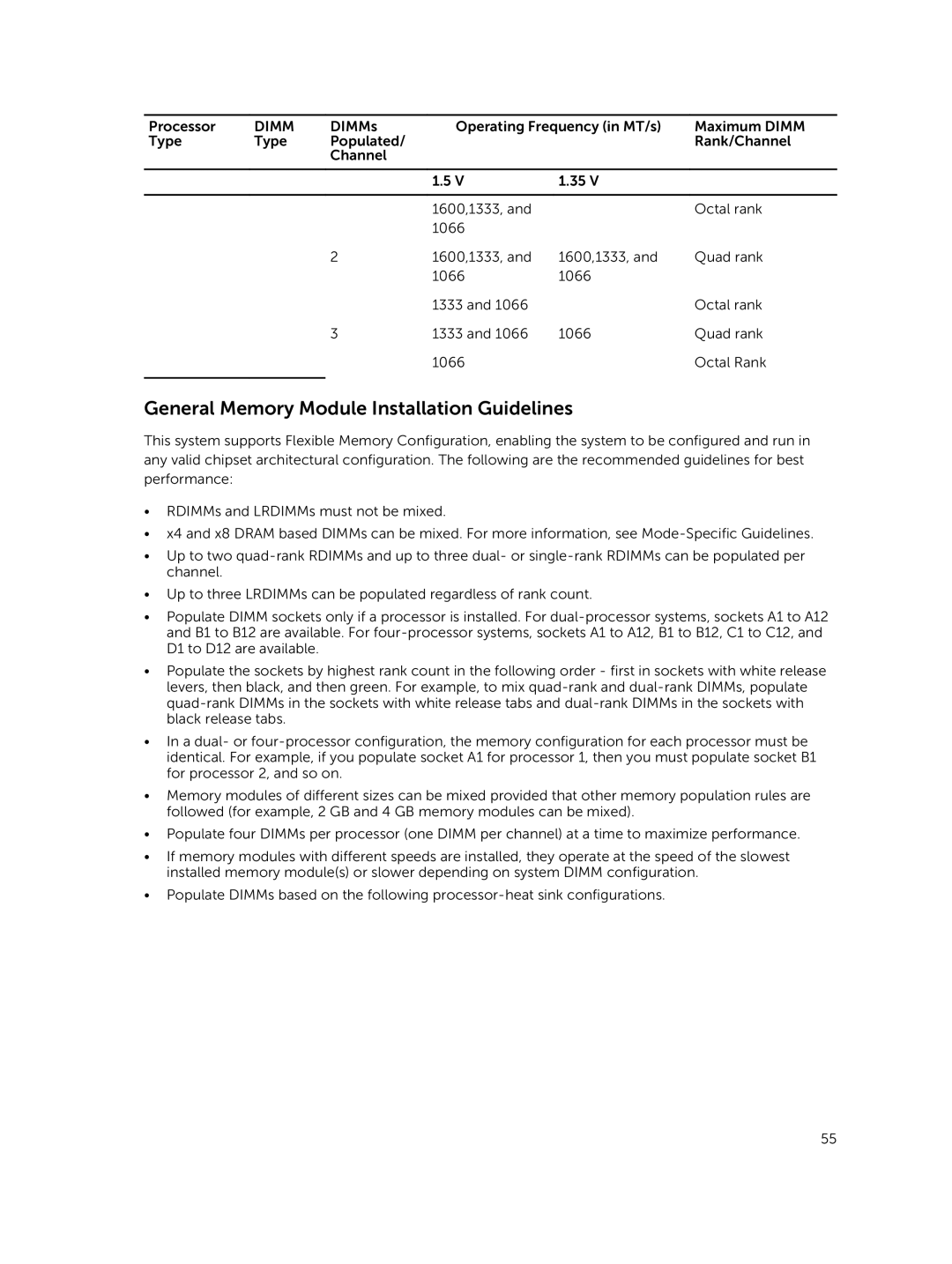Processor | DIMM | DIMMs | Operating Frequency (in MT/s) | Maximum DIMM | |
Type | Type | Populated/ |
|
| Rank/Channel |
|
| Channel |
|
|
|
|
|
|
|
|
|
|
|
| 1.5 V | 1.35 V |
|
|
|
|
|
|
|
|
|
| 1600,1333, and |
| Octal rank |
|
|
| 1066 |
|
|
|
| 2 | 1600,1333, and | 1600,1333, and | Quad rank |
|
|
| 1066 | 1066 |
|
|
|
| 1333 and 1066 |
| Octal rank |
|
| 3 | 1333 and 1066 | 1066 | Quad rank |
|
|
| 1066 |
| Octal Rank |
|
|
|
|
|
|
General Memory Module Installation Guidelines
This system supports Flexible Memory Configuration, enabling the system to be configured and run in any valid chipset architectural configuration. The following are the recommended guidelines for best performance:
•RDIMMs and LRDIMMs must not be mixed.
•x4 and x8 DRAM based DIMMs can be mixed. For more information, see
•Up to two
•Up to three LRDIMMs can be populated regardless of rank count.
•Populate DIMM sockets only if a processor is installed. For
•Populate the sockets by highest rank count in the following order - first in sockets with white release levers, then black, and then green. For example, to mix
•In a dual- or
•Memory modules of different sizes can be mixed provided that other memory population rules are followed (for example, 2 GB and 4 GB memory modules can be mixed).
•Populate four DIMMs per processor (one DIMM per channel) at a time to maximize performance.
•If memory modules with different speeds are installed, they operate at the speed of the slowest installed memory module(s) or slower depending on system DIMM configuration.
•Populate DIMMs based on the following
55
